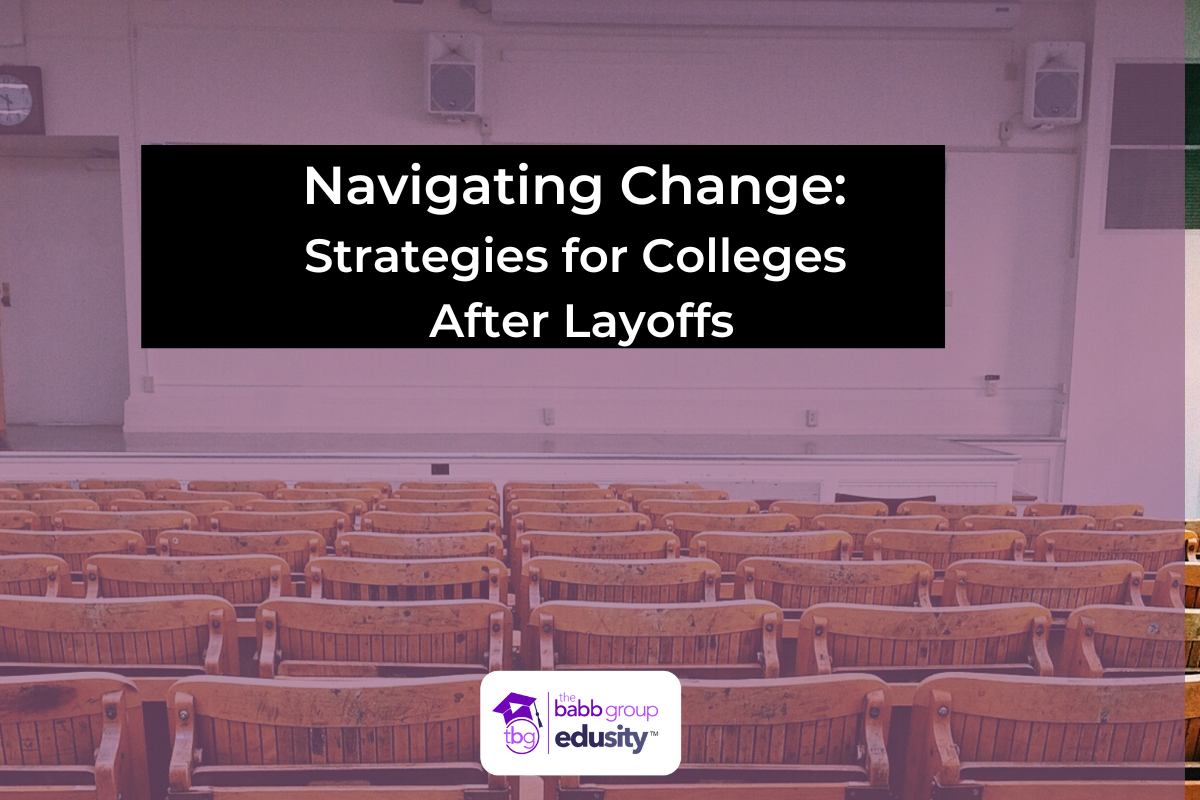With enrollment concerns and financial challenges, many colleges are resorting to staff layoffs to reduce costs. However, such decisions can profoundly impact institutional dynamics, including student retention, course quality, and program attractiveness. Students and remaining staff are left questioning who will teach and create course content. This article explores practical strategies for colleges to adapt and thrive after layoffs, focusing on retention, course content, and leveraging adjuncts and instructional designers to bridge the gaps.
Many schools are using staff reduction to meet budgets and overcome the challenges of low enrollment. But others are thriving and expanding! Fry notes that schools should now review their programs and target markets. She says, “Schools need to consider their customers, the students themselves. If students are not buying your product, it’s time to ask why and what they truly need from your institution.” Fry encourages schools to review their programs, modalities, and design, focusing on student demands and needs.
There are several ways colleges and universities can navigate the changing landscape of higher education and future-proof their institutions.
Prioritize Retention
Retaining current students is crucial in times of change. Colleges should focus on building a supportive environment that addresses the concerns and needs of students affected by layoffs. Fry suggests using the time to reflect on retention and identify gaps and issues reported by students. She encourages partners of The Babb Group to ask questions such as:
- Is the learning environment beneficial and well-designed?
- Is the course design consistent so students are set up for success?
- Is the content designed so students are achieving the outcomes?
- Can students apply the knowledge immediately?
Establishing clear communication channels, providing counseling services, and offering financial aid options help reassure students and minimize attrition. Also, fostering community and belonging through student organizations and mentorship programs can enhance student engagement and retention.
Enhance Course Content
After staff reductions, colleges must reassess and enhance their course offerings to maintain academic quality and meet students’ expectations. Collaborating with remaining faculty members to redesign curricula and incorporate innovative teaching methods can help sustain student interest and ensure relevant learning experiences. Encouraging interdisciplinary courses and real-world applications can also boost student engagement. Regularly soliciting student feedback and implementing necessary improvements will demonstrate a commitment to academic excellence.
Introduce New Programs
To attract and retain students, colleges should consider introducing new programs that align with emerging industry trends and student demands. For example, incorporating micro-credentials, professional certificates, and experiential learning opportunities can attract students seeking practical skills and career advancement. Conducting market research and analyzing employment projections can inform the development of targeted programs in high-demand fields. Research the micro-credentials your students value including fields such as esports management, cybersecurity, real estate, digital marketing, and construction management.
Leverage Adjuncts and Instructional Designers
Adjunct faculty members and instructional designers can be crucial in filling staffing gaps and providing high-level instruction. Colleges should actively recruit qualified adjuncts with expertise in the areas affected by layoffs, ensuring a seamless transition and maintaining instructional quality. Fry counsels, “Even after downsizing, there is still a need for high-quality education. By selecting high-quality adjuncts with applicable experience students will leave the course with a solid foundation of learning.”
Partnering with instructional designers can optimize course design, create engaging learning materials, and integrate technology effectively. Fry’s instructional design teams collaborate with colleges and universities to help launch engaging courses on time. Often during layoffs, staff are left scrambling to prepare for the next semester and juggling a mix of online, in-person, and hybrid courses. She says, “If an administration was previously relying on their full-time faculty to create course content, now is the time to pull in instructional design help for review and tweaking of content to assure that course outcomes are met in a timely manner for the next course run timeframe.”
By investing in professional development opportunities for adjuncts and instructional designers, colleges can ensure continuous improvement in teaching and learning practices.
While staff layoffs present significant challenges for colleges, strategic planning, and proactive measures can help institutions navigate these changes successfully. By prioritizing student retention, enhancing course content, introducing new programs, and leveraging adjuncts and instructional designers, colleges can adapt and thrive in the face of adversity. Embracing innovation, collaboration, and a student-centered approach will position colleges to meet the evolving needs of their students and the demands of the higher education landscape.
If you’re ready to assess your current and future courses, talk to The Babb Group about instructional design services, adjunct placement, accessibility and quality reviews. Our team is here to collaborate with your team.
Angela Britcher
Latest posts by Angela Britcher (see all)
- Enhancing First-Year Experiences in Higher Education - August 1, 2024
- Enhancing Education with Virtual Reality: A Hands-On Approach - June 27, 2024
- Higher Education Trends: Insights from Our COO, Sheila Fry - June 13, 2024
